Seeing and being
Preface
 This is an essay on the “hard problem” of consciousness. If we focus on visual consciousness for simplicity, this is often said to be the problem of explaining how the everyday phenomenon we call seeing “arises” from the brain. But I have never liked this way of phrasing the problem because it strikes me that we have a poor grasp (to begin with) of the everyday phenomenon of seeing itself. —What is this thing we call seeing? So, in the essay, I explore instead the prior question of what we suppose the everyday phenomenon of seeing even to be—a question just as hard, but one which I find to be considerably more fruitful. And the only decent answer I can come up with suggests that a certain form of “neutral monism” may be the true relation between mind and body. Written in 2014.
This is an essay on the “hard problem” of consciousness. If we focus on visual consciousness for simplicity, this is often said to be the problem of explaining how the everyday phenomenon we call seeing “arises” from the brain. But I have never liked this way of phrasing the problem because it strikes me that we have a poor grasp (to begin with) of the everyday phenomenon of seeing itself. —What is this thing we call seeing? So, in the essay, I explore instead the prior question of what we suppose the everyday phenomenon of seeing even to be—a question just as hard, but one which I find to be considerably more fruitful. And the only decent answer I can come up with suggests that a certain form of “neutral monism” may be the true relation between mind and body. Written in 2014.
 This is an essay on the “hard problem” of consciousness. If we focus on visual consciousness for simplicity, this is often said to be the problem of explaining how the everyday phenomenon we call seeing “arises” from the brain.
This is an essay on the “hard problem” of consciousness. If we focus on visual consciousness for simplicity, this is often said to be the problem of explaining how the everyday phenomenon we call seeing “arises” from the brain.
16. References
 Armstrong, D. M. (1968). A Materialist Theory of the Mind. Routledge & Kegan Paul.
Armstrong, D. M. (1968). A Materialist Theory of the Mind. Routledge & Kegan Paul.
Aydede, Murat (2009). ‘Pain.’ Stanford Encyclopedia of Philosophy, Spring 2013 edition.
 Augustine (401 AD). The Confessions of Saint Augustine. Trans. E. B. Pusey. Online version from Project Gutenburg.
Augustine (401 AD). The Confessions of Saint Augustine. Trans. E. B. Pusey. Online version from Project Gutenburg.
 Berkeley, George. A good introduction to Berkeley’s idealism is Lisa Downing’s entry, ‘George Berkeley,’ in the Stanford Encyclopedia of Philosophy.
Berkeley, George. A good introduction to Berkeley’s idealism is Lisa Downing’s entry, ‘George Berkeley,’ in the Stanford Encyclopedia of Philosophy.
 Berlin, Isaiah (1965). ‘Empirical Propositions and Hypothetical Statements.’ In Robert J. Swartz (ed.), Perceiving, Sensing and Knowing (University of California Press), pp. 364–93. Full view from Google Books.
Berlin, Isaiah (1965). ‘Empirical Propositions and Hypothetical Statements.’ In Robert J. Swartz (ed.), Perceiving, Sensing and Knowing (University of California Press), pp. 364–93. Full view from Google Books.
BonJour, Laurence (2007). ‘Epistemological Problems of Perception.’ Stanford Encyclopedia of Philosophy, Spring 2013 edition.
 Chalmers, David (1996). The Conscious Mind. Oxford University Press.
Chalmers, David (1996). The Conscious Mind. Oxford University Press.
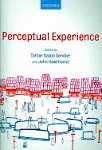 Dretske, Fred (2006). ‘Perception without Awareness.’ In T. S. Gendler & J. Hawthorne (eds.), Perceptual Experience (Oxford University Press), pp. 147–180.
Dretske, Fred (2006). ‘Perception without Awareness.’ In T. S. Gendler & J. Hawthorne (eds.), Perceptual Experience (Oxford University Press), pp. 147–180.
Ducasse, C. J. (1942). ‘Moore’s “The Refutation of Idealism.” In P. A. Schilpp (ed.), The Philosophy of G. E. Moore (Northwestern Univ. Press), pp. 225–51.
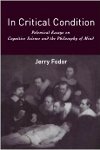 Fodor, Jerry (1995). ‘Review of Paul Churchland’s The Engine of Reason, The Seat of the Soul.’ The Times Literary Supplement, August 25. Reprinted in Fodor, In Critical Condition (MIT Press 1998).
Fodor, Jerry (1995). ‘Review of Paul Churchland’s The Engine of Reason, The Seat of the Soul.’ The Times Literary Supplement, August 25. Reprinted in Fodor, In Critical Condition (MIT Press 1998).
 Galileo (1623). The Assayer. Reprinted in Discoveries and Opinions of Galileo, (Doubleday 1957), trans. Stillman Drake, pp. 231–80. Online copy available here.
Galileo (1623). The Assayer. Reprinted in Discoveries and Opinions of Galileo, (Doubleday 1957), trans. Stillman Drake, pp. 231–80. Online copy available here.
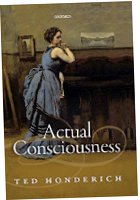 Honderich, Ted (2014). Actual Consciousness. Oxford University Press. —— (2014). ‘Actualism: A Different Theory of Consciousness.’ Royal Institute of Philosophy London Lecture Series, Mind, Self and Person (2013–14). Revised text available from Ted Honderich’s website. Or watch the YouTube video. The bit I quoted from the text appears in the video at around 19:47 onwards. —— (2000). ‘Consciousness as Existence Again.’ In Bernard Elevitch (ed.), Proceedings of the Twentieth World Congress of Philosophy, Vol. 9 (Phil. Doc. Center). Available at Ted Honderich’s website.
Honderich, Ted (2014). Actual Consciousness. Oxford University Press. —— (2014). ‘Actualism: A Different Theory of Consciousness.’ Royal Institute of Philosophy London Lecture Series, Mind, Self and Person (2013–14). Revised text available from Ted Honderich’s website. Or watch the YouTube video. The bit I quoted from the text appears in the video at around 19:47 onwards. —— (2000). ‘Consciousness as Existence Again.’ In Bernard Elevitch (ed.), Proceedings of the Twentieth World Congress of Philosophy, Vol. 9 (Phil. Doc. Center). Available at Ted Honderich’s website.
 Humphrey, Nicholas (2006). Seeing Red: A Study in Consciousness. Harvard Univ. Press.
Humphrey, Nicholas (2006). Seeing Red: A Study in Consciousness. Harvard Univ. Press.
 Husserl, Edmund (1913). Ideas Pertaining to a Pure Phenomenology and to a Phenomenological Philosophy – First Book: General Introduction to a Pure Phenomenology. The passage I quoted is from the Martinus Nijhoff 1983 edition, trans. F. Kersten.
Husserl, Edmund (1913). Ideas Pertaining to a Pure Phenomenology and to a Phenomenological Philosophy – First Book: General Introduction to a Pure Phenomenology. The passage I quoted is from the Martinus Nijhoff 1983 edition, trans. F. Kersten.
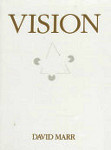 Marr, David (1982). Vision. W. H. Freeman.
Marr, David (1982). Vision. W. H. Freeman.
 Merleau-Ponty, Maurice (1945). Phenomenology of Perception. The quotes in the essay are from the Routledge 2002 edition, trans. Colin Smith.
Merleau-Ponty, Maurice (1945). Phenomenology of Perception. The quotes in the essay are from the Routledge 2002 edition, trans. Colin Smith.
 Metzger, Wolfgang (1936). Laws of Seeing. The passage I quoted is from the MIT Press 2006 edition, trans. Lothar Spillmann et. al.
Metzger, Wolfgang (1936). Laws of Seeing. The passage I quoted is from the MIT Press 2006 edition, trans. Lothar Spillmann et. al.
 Mill, John Stuart (1865). An Examination of Sir William Hamilton’s Philosophy. Longmans, Green & Co. Online version from California Digital Library. Mill’s famous definition of matter as a permanent possibility of sensation occurs at p. 198.
Mill, John Stuart (1865). An Examination of Sir William Hamilton’s Philosophy. Longmans, Green & Co. Online version from California Digital Library. Mill’s famous definition of matter as a permanent possibility of sensation occurs at p. 198.
Moore, G. E. (1903). ‘The Refutation of Idealism.’ Mind, vol. 12, pp. 433–453.
 Noë, Alva (2002). ‘Is the Visual World a Grand Illusion?’ Journal of Consciousness Studies, vol. 9, pp. 1–12. Reprinted in Noë (ed.), Is the Visual World a Grand Illusion? (Imprint Academic).
Noë, Alva (2002). ‘Is the Visual World a Grand Illusion?’ Journal of Consciousness Studies, vol. 9, pp. 1–12. Reprinted in Noë (ed.), Is the Visual World a Grand Illusion? (Imprint Academic).
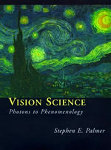 Palmer, Stephen E. (1999) Vision Science: Photons to Phenomenology. MIT Press.
Palmer, Stephen E. (1999) Vision Science: Photons to Phenomenology. MIT Press.
 Piaget, Jean. My knowledge of Piaget is really just from the grapevine. But see this article by Bruce Bower, ‘A Child’s Theory of Mind,’ (pdf), Science News (1993), for the sorts of considerations mentioned in the essay.
Piaget, Jean. My knowledge of Piaget is really just from the grapevine. But see this article by Bruce Bower, ‘A Child’s Theory of Mind,’ (pdf), Science News (1993), for the sorts of considerations mentioned in the essay.
 Reid, Thomas (1786). Essays on the Intellectual Powers of Man. John Bell. The quote in the essay is from the abridged 6th edition (ed. James Walker), Phillips, Sampson & Co. (1855). Full views of both editions are available from Google Books. 1785 edition. 1855 edition.
Reid, Thomas (1786). Essays on the Intellectual Powers of Man. John Bell. The quote in the essay is from the abridged 6th edition (ed. James Walker), Phillips, Sampson & Co. (1855). Full views of both editions are available from Google Books. 1785 edition. 1855 edition.
 Russell, Bertrand (1927). The Analysis of Matter. Kegan Paul, Trench, Trubner & Co.
Russell, Bertrand (1927). The Analysis of Matter. Kegan Paul, Trench, Trubner & Co.
 Ryle, Gilbert (1949). The Concept of Mind. Hutchinson Press.
Ryle, Gilbert (1949). The Concept of Mind. Hutchinson Press.
Sagan, Carl (1980). Cosmos: A Personal Voyage. PBS TV series, 13 episodes. See the videos section on this site. The bit I quoted is from episode 3 at around 9:45 onwards.
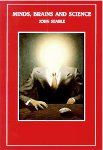 Searle, John (1984). Minds, Brains and Science. Harvard University Press.
Searle, John (1984). Minds, Brains and Science. Harvard University Press.
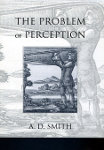 Smith, A. D. (2002). The Problem of Perception. Harvard University Press.
Smith, A. D. (2002). The Problem of Perception. Harvard University Press.
Sundström, Pär (2007). ‘Colour and Consciousness: Untying the Metaphysical Knot.’ Philosophical Studies, vol. 136, pp. 123–65.
 Valberg, J. J. (1992). The Puzzle of Experience. Oxford University Press.
Valberg, J. J. (1992). The Puzzle of Experience. Oxford University Press.
 Wittgenstein, Ludwig (1953). Philosophical Investigations. Macmillan 1959 edition, trans. G. E. M. Anscombe.
Wittgenstein, Ludwig (1953). Philosophical Investigations. Macmillan 1959 edition, trans. G. E. M. Anscombe.
 Armstrong, D. M. (1968). A Materialist Theory of the Mind. Routledge & Kegan Paul.
Armstrong, D. M. (1968). A Materialist Theory of the Mind. Routledge & Kegan Paul.Aydede, Murat (2009). ‘Pain.’ Stanford Encyclopedia of Philosophy, Spring 2013 edition.
 Augustine (401 AD). The Confessions of Saint Augustine. Trans. E. B. Pusey. Online version from Project Gutenburg.
Augustine (401 AD). The Confessions of Saint Augustine. Trans. E. B. Pusey. Online version from Project Gutenburg. Berkeley, George. A good introduction to Berkeley’s idealism is Lisa Downing’s entry, ‘George Berkeley,’ in the Stanford Encyclopedia of Philosophy.
Berkeley, George. A good introduction to Berkeley’s idealism is Lisa Downing’s entry, ‘George Berkeley,’ in the Stanford Encyclopedia of Philosophy.  Berlin, Isaiah (1965). ‘Empirical Propositions and Hypothetical Statements.’ In Robert J. Swartz (ed.), Perceiving, Sensing and Knowing (University of California Press), pp. 364–93. Full view from Google Books.
Berlin, Isaiah (1965). ‘Empirical Propositions and Hypothetical Statements.’ In Robert J. Swartz (ed.), Perceiving, Sensing and Knowing (University of California Press), pp. 364–93. Full view from Google Books.BonJour, Laurence (2007). ‘Epistemological Problems of Perception.’ Stanford Encyclopedia of Philosophy, Spring 2013 edition.
 Chalmers, David (1996). The Conscious Mind. Oxford University Press.
Chalmers, David (1996). The Conscious Mind. Oxford University Press. Dretske, Fred (2006). ‘Perception without Awareness.’ In T. S. Gendler & J. Hawthorne (eds.), Perceptual Experience (Oxford University Press), pp. 147–180.
Dretske, Fred (2006). ‘Perception without Awareness.’ In T. S. Gendler & J. Hawthorne (eds.), Perceptual Experience (Oxford University Press), pp. 147–180.Ducasse, C. J. (1942). ‘Moore’s “The Refutation of Idealism.” In P. A. Schilpp (ed.), The Philosophy of G. E. Moore (Northwestern Univ. Press), pp. 225–51.
 Fodor, Jerry (1995). ‘Review of Paul Churchland’s The Engine of Reason, The Seat of the Soul.’ The Times Literary Supplement, August 25. Reprinted in Fodor, In Critical Condition (MIT Press 1998).
Fodor, Jerry (1995). ‘Review of Paul Churchland’s The Engine of Reason, The Seat of the Soul.’ The Times Literary Supplement, August 25. Reprinted in Fodor, In Critical Condition (MIT Press 1998). Galileo (1623). The Assayer. Reprinted in Discoveries and Opinions of Galileo, (Doubleday 1957), trans. Stillman Drake, pp. 231–80. Online copy available here.
Galileo (1623). The Assayer. Reprinted in Discoveries and Opinions of Galileo, (Doubleday 1957), trans. Stillman Drake, pp. 231–80. Online copy available here. Honderich, Ted (2014). Actual Consciousness. Oxford University Press.
Honderich, Ted (2014). Actual Consciousness. Oxford University Press. Humphrey, Nicholas (2006). Seeing Red: A Study in Consciousness. Harvard Univ. Press.
Humphrey, Nicholas (2006). Seeing Red: A Study in Consciousness. Harvard Univ. Press. Husserl, Edmund (1913). Ideas Pertaining to a Pure Phenomenology and to a Phenomenological Philosophy – First Book: General Introduction to a Pure Phenomenology. The passage I quoted is from the Martinus Nijhoff 1983 edition, trans. F. Kersten.
Husserl, Edmund (1913). Ideas Pertaining to a Pure Phenomenology and to a Phenomenological Philosophy – First Book: General Introduction to a Pure Phenomenology. The passage I quoted is from the Martinus Nijhoff 1983 edition, trans. F. Kersten. Marr, David (1982). Vision. W. H. Freeman.
Marr, David (1982). Vision. W. H. Freeman. Merleau-Ponty, Maurice (1945). Phenomenology of Perception. The quotes in the essay are from the Routledge 2002 edition, trans. Colin Smith.
Merleau-Ponty, Maurice (1945). Phenomenology of Perception. The quotes in the essay are from the Routledge 2002 edition, trans. Colin Smith. Metzger, Wolfgang (1936). Laws of Seeing. The passage I quoted is from the MIT Press 2006 edition, trans. Lothar Spillmann et. al.
Metzger, Wolfgang (1936). Laws of Seeing. The passage I quoted is from the MIT Press 2006 edition, trans. Lothar Spillmann et. al. Mill, John Stuart (1865). An Examination of Sir William Hamilton’s Philosophy. Longmans, Green & Co. Online version from California Digital Library. Mill’s famous definition of matter as a permanent possibility of sensation occurs at p. 198.
Mill, John Stuart (1865). An Examination of Sir William Hamilton’s Philosophy. Longmans, Green & Co. Online version from California Digital Library. Mill’s famous definition of matter as a permanent possibility of sensation occurs at p. 198.Moore, G. E. (1903). ‘The Refutation of Idealism.’ Mind, vol. 12, pp. 433–453.
 Noë, Alva (2002). ‘Is the Visual World a Grand Illusion?’ Journal of Consciousness Studies, vol. 9, pp. 1–12. Reprinted in Noë (ed.), Is the Visual World a Grand Illusion? (Imprint Academic).
Noë, Alva (2002). ‘Is the Visual World a Grand Illusion?’ Journal of Consciousness Studies, vol. 9, pp. 1–12. Reprinted in Noë (ed.), Is the Visual World a Grand Illusion? (Imprint Academic). Palmer, Stephen E. (1999) Vision Science: Photons to Phenomenology. MIT Press.
Palmer, Stephen E. (1999) Vision Science: Photons to Phenomenology. MIT Press. Piaget, Jean. My knowledge of Piaget is really just from the grapevine. But see this article by Bruce Bower, ‘A Child’s Theory of Mind,’ (pdf), Science News (1993), for the sorts of considerations mentioned in the essay.
Piaget, Jean. My knowledge of Piaget is really just from the grapevine. But see this article by Bruce Bower, ‘A Child’s Theory of Mind,’ (pdf), Science News (1993), for the sorts of considerations mentioned in the essay. Reid, Thomas (1786). Essays on the Intellectual Powers of Man. John Bell. The quote in the essay is from the abridged 6th edition (ed. James Walker), Phillips, Sampson & Co. (1855). Full views of both editions are available from Google Books. 1785 edition. 1855 edition.
Reid, Thomas (1786). Essays on the Intellectual Powers of Man. John Bell. The quote in the essay is from the abridged 6th edition (ed. James Walker), Phillips, Sampson & Co. (1855). Full views of both editions are available from Google Books. 1785 edition. 1855 edition. Russell, Bertrand (1927). The Analysis of Matter. Kegan Paul, Trench, Trubner & Co.
Russell, Bertrand (1927). The Analysis of Matter. Kegan Paul, Trench, Trubner & Co. Ryle, Gilbert (1949). The Concept of Mind. Hutchinson Press.
Ryle, Gilbert (1949). The Concept of Mind. Hutchinson Press.Sagan, Carl (1980). Cosmos: A Personal Voyage. PBS TV series, 13 episodes. See the videos section on this site. The bit I quoted is from episode 3 at around 9:45 onwards.
 Searle, John (1984). Minds, Brains and Science. Harvard University Press.
Searle, John (1984). Minds, Brains and Science. Harvard University Press. Smith, A. D. (2002). The Problem of Perception. Harvard University Press.
Smith, A. D. (2002). The Problem of Perception. Harvard University Press.Sundström, Pär (2007). ‘Colour and Consciousness: Untying the Metaphysical Knot.’ Philosophical Studies, vol. 136, pp. 123–65.
 Valberg, J. J. (1992). The Puzzle of Experience. Oxford University Press.
Valberg, J. J. (1992). The Puzzle of Experience. Oxford University Press. Wittgenstein, Ludwig (1953). Philosophical Investigations. Macmillan 1959 edition, trans. G. E. M. Anscombe.
Wittgenstein, Ludwig (1953). Philosophical Investigations. Macmillan 1959 edition, trans. G. E. M. Anscombe.
Menu
 What’s a logical paradox?
What’s a logical paradox? Achilles & the tortoise
Achilles & the tortoise The surprise exam
The surprise exam Newcomb’s problem
Newcomb’s problem Newcomb’s problem (sassy version)
Newcomb’s problem (sassy version) Seeing and being
Seeing and being Logic test!
Logic test! Philosophers say the strangest things
Philosophers say the strangest things Favourite puzzles
Favourite puzzles Books on consciousness
Books on consciousness Philosophy videos
Philosophy videos Phinteresting
Phinteresting Philosopher biographies
Philosopher biographies Philosopher birthdays
Philosopher birthdays Draft
Draftbarang 2009-2024  wayback machine
wayback machine
 wayback machine
wayback machine